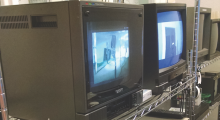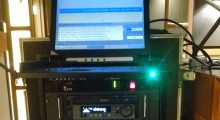HDCAM
-
Long-Term Care: How to Archive Your Film

Your film is done. Audiences have laughed and cried while watching it. You got a week-long run in New York and Los Angeles. Soon your aunt in Springfield will be able to watch it on Netflix and have a strained telephone conversation about how “interesting” it is. On to the next project! Not so fast. You need to archive your film now. Put down your storyboard for your next picture and help preserve your old one first. The Film Foundation estimates that “one half of all films made before 1950, and over 80 percent made before 1929 are lost forever.” […]
by Sergio Andrés Lobo-Navia on Jan 20, 2016 -
How to Deliver Your Film to a Festival

Note (May 2018): the updated version of this article can be found here. Format. Codec. Audio. DCP. You’ve worked on your movie now for some time and have been eagerly waiting for acceptance emails from festivals. One lands in your inbox, and you excitedly read through the letter until, when you get to the festival’s technical requirements, you develop a sense of dread. The tersely worded communication from the technical director (glad we could finally meet) would put you to sleep if it didn’t terrify you. But don’t panic. Instead, phone your editor, and read this guide. Caveat emptor, though: […]
by Sergio Andrés Lobo-Navia on Oct 28, 2015 -
Leitner’s Mondo NAB, Part 3: SSD, Tapes and Storage

Originally posted April 2011. At back-to-back press conferences prior to the opening of NAB’s show floor, both Panasonic and Sony acknowledged the still-unfolding natural disaster in Japan and asked that our thoughts be with the Japanese people. Sony added that despite critical damage to its media plant in Sendai, supplies of HDCAM-SR tape would return to normal by June. Sony’s Sendai Technology Center (which I’ve visited) practically invented the high-performance tapes necessary to DV and HDV (metal evaporated) and HDCAM-SR (metal particle), and still manufactures a preponderance of them. Having persuaded both film and television industries to adopt HDCAM-SR as […]
by David Leitner on Nov 27, 2011
